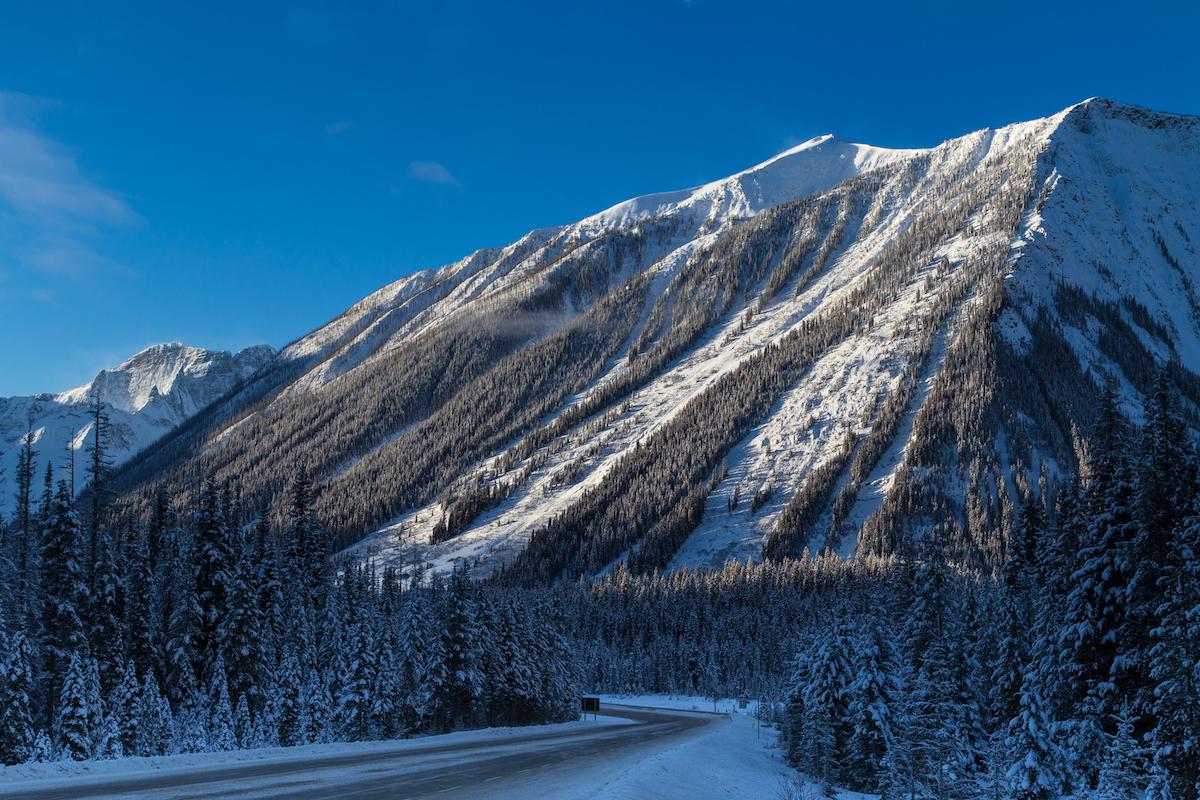
An aerial view of remote Highway 93 South as it winds through Kootenay National Park/Parks Canada/Ross MacDonald
Kootenay National Park is getting new, permanent emergency satellite phone services for motorists travelling along Highway 93 South.
There’s no cell coverage or WIFI through most of the British Columbia park, so this means that motorists will never be more than 15 minutes by car from the nearest emergency telephone.
Parks Canada has provided an emergency telephone at the Kootenay Crossing Operations Centre for more than 25 years. This phone will be replaced with new satellite technology and three additional satellite phones will be installed.
When the project is complete, emergency phones will be available at the Marble Canyon Day Use Area, Simpson River Trailhead, Kootenay River Day Use Area and Kootenay Crossing Operations Centre.
The satellite phones will connect directly to Banff Dispatch for 24/7 emergency services. New highway signs will be installed and existing signs modified to include a SOS symbol. Mileage markers will also be installed along the highway to help travellers determine their precise location when reporting an emergency.

Drivers must be prepared to tackle the isolated highway through Kootenay National Park in winter/Parks Canada
This is a joint project by Parks Canada and the British Columbia Ministry of Transportation and Infrastructure. It’s aimed at improving safety for park visitors, as well as for motorists who may use this route during impending upgrades to the Trans-Canada Highway.
The Kicking Horse Canyon, just east of Golden, is one of the highway’s most rugged and scenic sections. As a tourist and commercial transportation corridor, it carries more than 10,000 vehicles daily during the summer. Up to 30 per cent of the traffic involves commercial vehicles moving millions of dollars in goods to serve interprovincial and international trade.
Three phases of work have transformed 21 kilometres (13 miles) of narrow, winding two-lane highway into a modern four-lane, 100 kilometre an hour (60 miles per hour) standard. Construction of the fourth and final phase to complete the remaining – and most difficult – 4.8 kilometres (2.9 miles) is expected to be substantially complete in winter 2023-24.
Until then, expect significant traffic disruptions ranging from 20-minute stoppages and overnight closures to multi-day closures during off-peak shoulder seasons. The first extended closure is slated to run April 12 to May 14 and will force motorists to use Highways 93 and 95 as an alternative route.

 Support Essential Coverage of Essential Places
Support Essential Coverage of Essential Places



